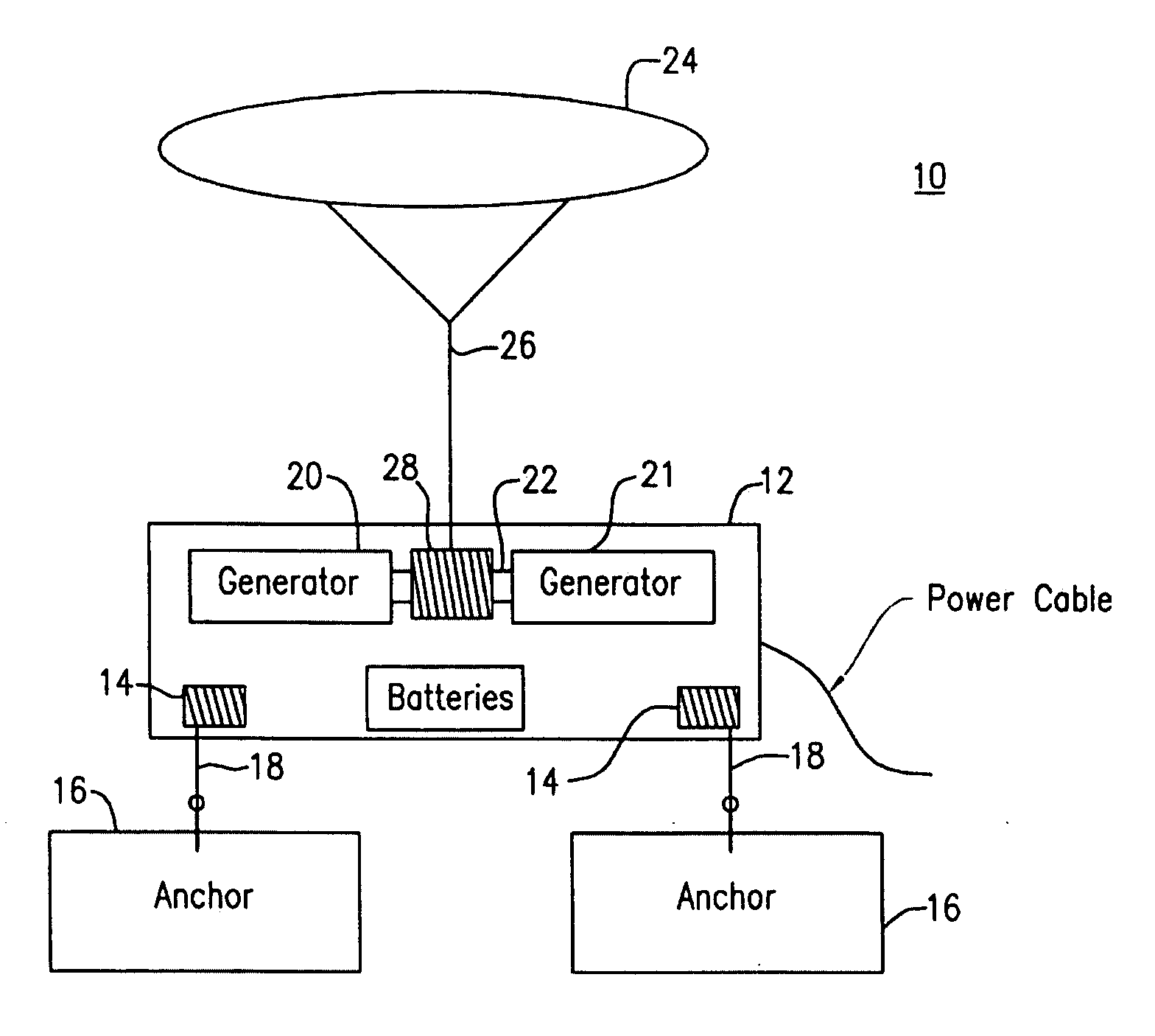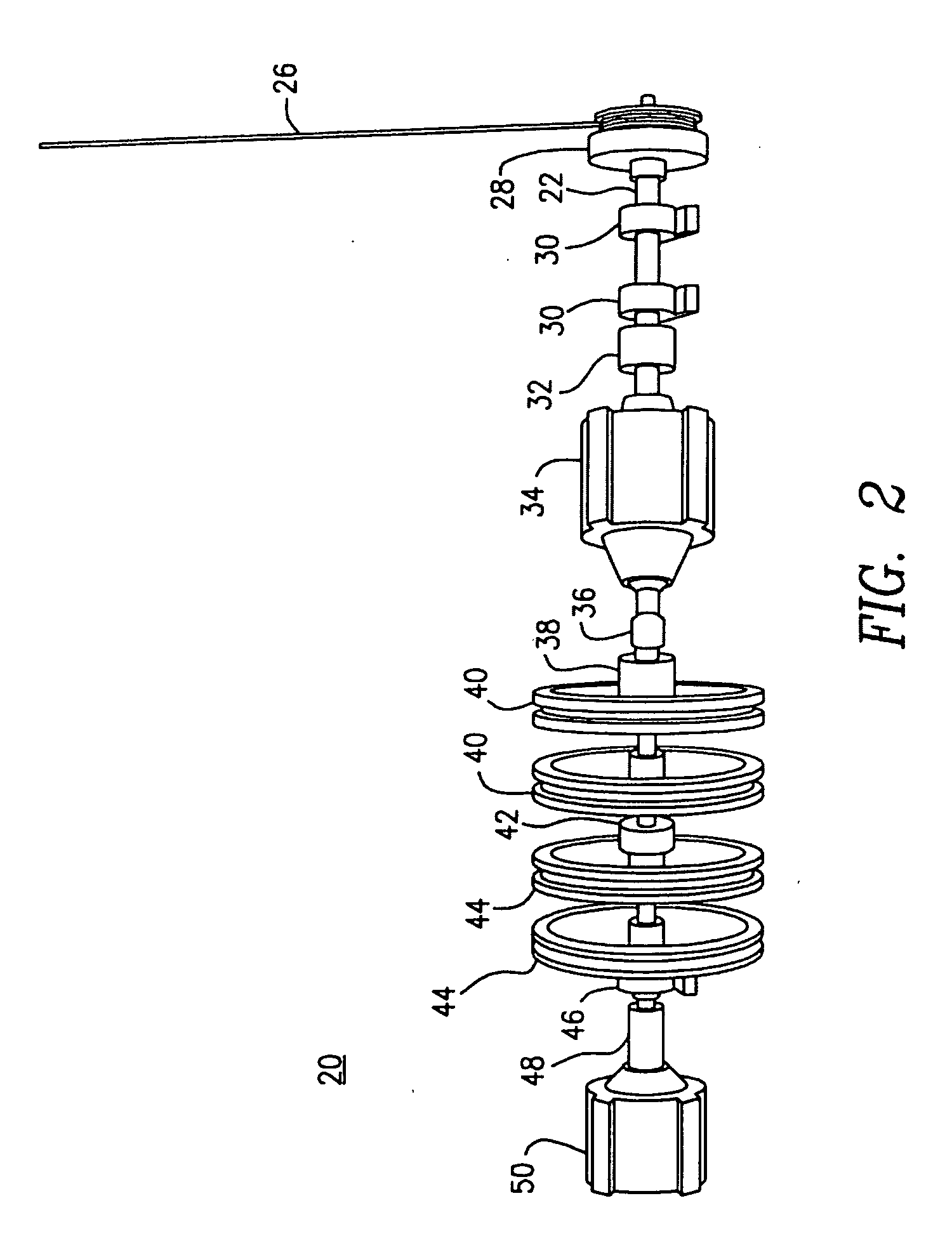Wave energy harnessing device
a technology of wave energy and harnessing device, which is applied in the field of mechanical energy harnessing device, can solve the problems of limited operation of all other existing systems, and achieve the effect of increasing electrical output and storage capacity, and widening the range of operation
- Summary
- Abstract
- Description
- Claims
- Application Information
AI Technical Summary
Benefits of technology
Problems solved by technology
Method used
Image
Examples
Embodiment Construction
[0010]Turning to FIG. 1, in a preferred embodiment, the present invention 10 includes a water-tight housing 12 that can be lowered and raised by winches 14 connected to anchors 16 by cables 18. The anchors 16 are set in the floor of a body of water such as the ocean. Preferably, the water-tight housing 12 is cylindrical in shape and is anchored at four points. An electrical generation system 20, 21 is contained in the water-tight housing 12 through fittings for power and control cables. The electrical generation system 20, 21 is powered by a shaft 22 fixed or coupled to a cable reel 28, and is connected to power cables to return electrical power to a substation. The shaft 22 may be installed in the housing 12 in the same manner by which a propeller shaft is installed in a boat or submarine. In a typical embodiment, there would be redundant generation systems 20, 21 connected by the shaft 22. The cable reel 28 is tethered to a flotation device 24 on the surface of the water by cable ...
PUM
 Login to View More
Login to View More Abstract
Description
Claims
Application Information
 Login to View More
Login to View More - R&D
- Intellectual Property
- Life Sciences
- Materials
- Tech Scout
- Unparalleled Data Quality
- Higher Quality Content
- 60% Fewer Hallucinations
Browse by: Latest US Patents, China's latest patents, Technical Efficacy Thesaurus, Application Domain, Technology Topic, Popular Technical Reports.
© 2025 PatSnap. All rights reserved.Legal|Privacy policy|Modern Slavery Act Transparency Statement|Sitemap|About US| Contact US: help@patsnap.com



